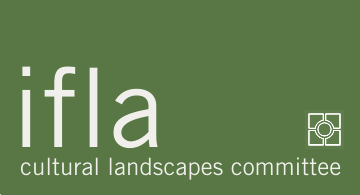best practices > sample project summaries
Historic Oasis Settlements of the Jerid Region
Southern Tunisia
Cultural Landscape Type: Evolved Relict
Project Name: The Jerid Oases Conservation Project
Project Type: Documentation Project: Cultural Landscape Assessment
Location:Southern Tunisia, Jerid Region, Latitude: 35° 0' 0 N / Longitude: 8° 50' 60 E
Cultural Landscape Size: Large, Several Villages and Context
Property Owner/Steward: Various Tunisian municipalities
Funding: Not reported
Relevant Historical Dates:Late Roman period to 1970
Historic Landscape Architect, Designers: Evolved Cultural Landscapes of several villages
Contact: Leslie Friedman, Conservator, friedman.la@gmail.com
Benjamin Marcus, Conservator, blmarcus@gmail.com


Project Description:
The Jerid Oases Conservation Project focuses on the documentation of historic earthen villages and associated date palm oases located in the mountainous Jerid region of southern Tunisia. Situated near the Algerian border, an area historically occupied by Berber ethnic groups, the villages and oases are linked by common trade routes dating to pre-Roman times and were thus approached as a cultural landscape. Visited by thousands of tourists yearly, the unoccupied earthen sites and oases are increasingly threatened by uncontrolled visitation, material decay, and dispersion of the local population. The project conducted preliminary documentation of the sites which consist of densely packed multi-story structures built of earth, rubble stone and palm wood. The oasis ecosystem was also analyzed including assessment of surviving water sources, water management technologies, and diverse plant and animal species specifically adapted for the palm oasis environment. Interpretation of the sites was considered, including evaluation of a museum currently operating in one of the villages, as well as review of interpretation methods used at similar village sites in southern Tunisia.
The project team documented conservation issues facing the largely abandoned earthen structures and cultivated palmeries, and proposed a framework for their stabilization and management, working towards a larger conservation program for the cultural landscape. This framework encompasses key short-term conservation recommendations to insure the immediate protection of historic fabric, and long-term recommendations that address the future survival of the larger ecosystem and cultural traditions that are exemplified in the area. In the future, the project aims to create a cultural landscape conservation and management plan which will include a sustainable conservation program for both the built and natural environments, measures intended to preserve tangible and intangible elements of Berber culture in the area, and steps toward funding and implementing conservation and interpretation.

. . .deterioration or disappearance of any item of the cultural or natural heritage constitutes a harmful impoverishment of the heritage of all the nations of the world.
World Heritage Convention Concerning the Protection of the World Cultural and Natural Heritage, 1972

